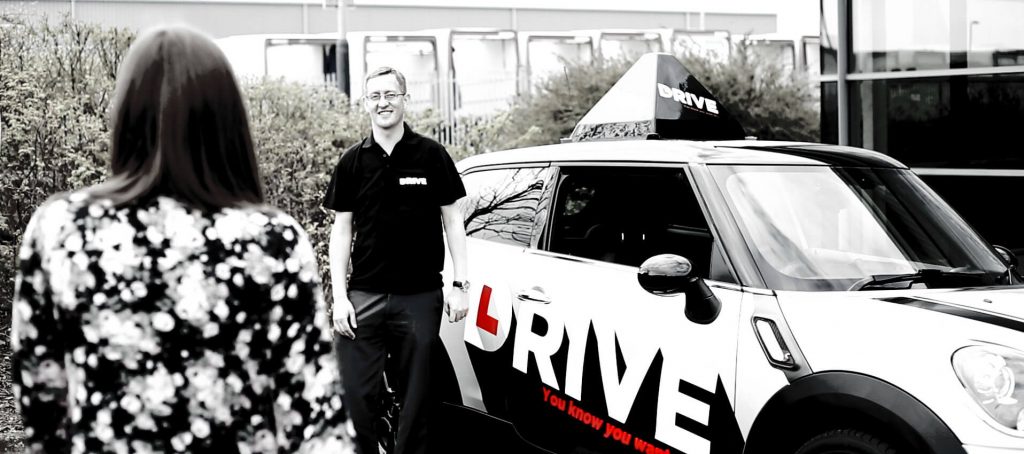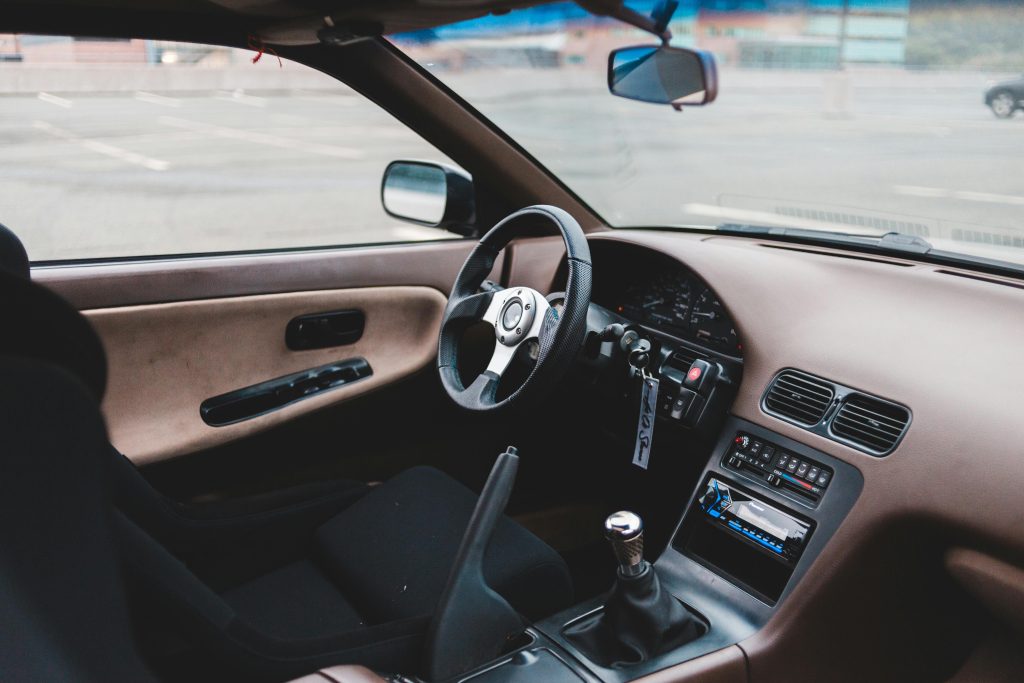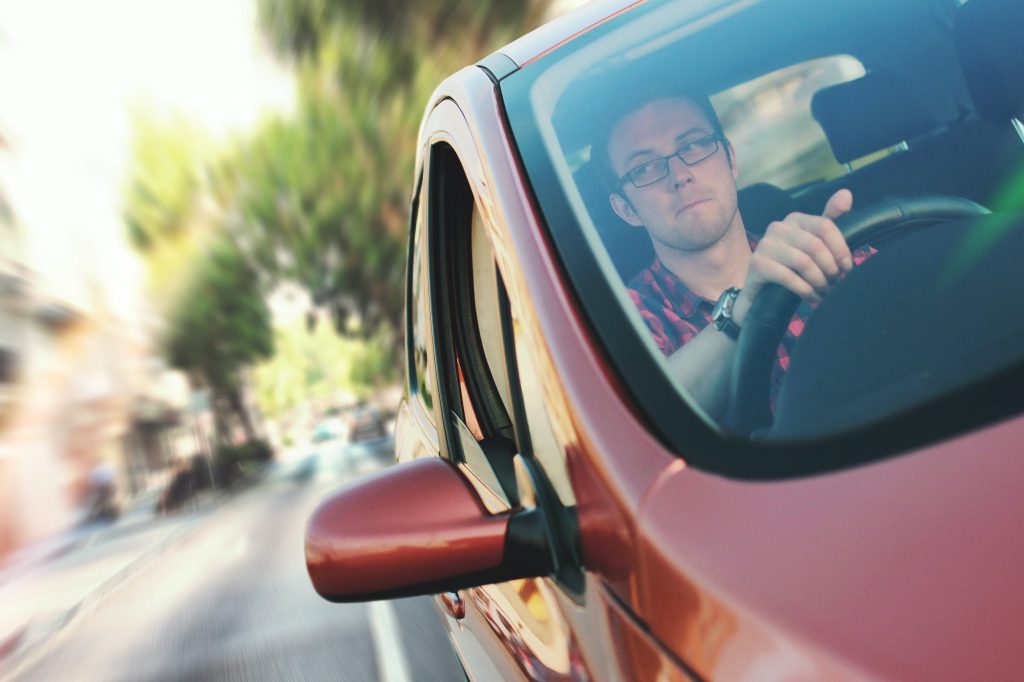Getting behind the wheel of a car can be exhilarating—or nerve wracking. After all, while the freedom of the open road is an exciting prospect, that emotion is tempered somewhat by the fact that… well, you have no idea what you’re doing yet! One thing that can help to ease your mind, however, is knowing what to expect on your first lesson.
In this guide, we’ll show you exactly what is likely to happen during your first driving lesson from start to finish. We’ll even include a few tips to help your first lesson fly by without a hitch!
Your first driving lesson
While the duration of your first driving lesson may vary depending on your chosen driving school or instructor, it will likely be around two hours long. This will be more than enough time for your driving instructor to introduce basics like the cockpit drill and even get you out onto the roads briefly. Unless you’ve decided on a particularly intensive approach, it’s unlikely that your lesson will be any longer than that.
Your instructor will, of course, let you know how long the lesson will be well in advance. They’ll also have a lesson plan in mind, so you don’t have to worry about them being ill-prepared.
Getting picked up

Your driving instructor will pick you up from home or your workplace, depending on your preferences and overall availability. Once you’ve settled on a date and time for your first driving lesson, it’s important that you double-check all of the details. You don’t want any mix-ups ruining your big day! On the day itself, your instructor might show up early. So, make sure you’re ready early just in case.
For your first driving lesson, you will need to bring:
– Your provisional licence. This will only be for your first lesson. It will allow your driving instructor to make sure you’re legally allowed to drive.
– Comfortable shoes. You should wear flat, comfortable shoes that have a thin sole so you can feel the controls properly.
– Glasses or contact lenses. Though it might seem obvious, if you need to wear either, make sure you remember—your lesson will be cut short otherwise!
– A bottle of water. You’ll be in the car for a couple of hours, so you might want to stay hydrated.
Lesson plan
Head somewhere quiet
Once your instructor has greeted you, they will guide you to their car. Before you even think about getting behind the wheel, you should know that you won’t be driving straight away. In your first driving lesson, your instructor will be sticking to the basics and will only likely let you drive for a short while. Once you’ve completed a few more hours, your instructor will start to let you drive away from your home or workplace to an area of their choosing.
As you’re learning with a local driving instructor, they’ll know all the best places to take learner drivers. For your first lesson, they’ll pick out a quiet, residential area where you won’t be disturbed. They’ll then get out of the car and have you switch places with them so that you’re finally behind the wheel.
Get used to the car

Before you start the engine, you’ve first got to get to grips with the basics. In fact, most of your lesson will be taken up by you getting used to your instructor’s car—looking at the controls, figuring out how to move things around to suit you better and finding out how everything works. In all, it might not seem particularly interesting, but it will be fundamental in helping you learn to drive.
The cockpit drill
Once you’re behind the wheel, your driving instructor will walk you through the cockpit drill. This will consist of safety procedures and handy explanations that will show you how to adjust certain parts of the car in order to ensure you’re able to drive safely. Though the instructor will likely move through it slowly enough, be sure to ask them to repeat anything if you’re not sure.
The cockpit drill is otherwise known as DSSSM and is pretty straightforward once you’ve done it a few times.
– Doors. Before you ever set off, you first need to make sure that all the doors are closed and secure.
– Seat. Your seat will need to be adjusted to ensure you can reach the controls, have a clear view of the road ahead and look in your mirrors. You will also need to move the headrest.
– Steering position. The steering wheel will need to be moved closer/further, higher/lower, depending on your position.
– Seatbelt. You will need to be buckled in before you ever drive off—for obvious safety reasons.
– Mirrors. In order to see the road behind you and your blindspots, you will need to adjust the mirrors so they’re in your eyeline.
Your instructor will demonstrate how to use the levers and controls to adjust everything and give you a few pointers to make it easier for you in the future. Trust us, you’ll know it like the back of your hand in no time.
Car controls

Next, you’ll move onto car controls. Your instructor will likely start with the foot pedals. It’s easy to remember which is which—simply remember the acronym CBA for Clutch, Brake and Accelerator. Your instructor will briefly explain the uses of each pedal to you. The gear stick will likely come next, along with the handbrake.
Before you start getting too bored by the theoretical side of things, your instructor will probably let you get some hands-on experience with the clutch. They’ll walk you through how to find the biting point—giving control over to you so that you can get used to doing it over and over again. You might spend a good five minutes finding the biting point, letting it go momentarily and then finding it again. It’s definitely good practice to have!
Your lesson will then delve briefly into the importance of checking your mirrors and blindspots before moving off. You might even get the chance to try out signalling with indicators! (We’ll hold briefly for a loud applause here.)
Worried you’d get to the end of your first driving lesson without actually getting to drive? Relax! Your driving instructor will squeeze in some time for you to slowly drive around a quiet residential area. Though you probably won’t go any higher than second gear, you’ll be able to get a feel for using the accelerator, brake and clutch pedals. You’ll also get to try out some kerb-side parking.
Whilst you might only have a short time to drive during your first lesson, you should bear in mind that you’ll get plenty of time to do so during your next lesson.
Head back home

Once you’ve stopped the car, applied the handbrake and turned off the engine, the instructor will tell you to switch places with them. They will then proceed to drive you back home or back to work. They will stop the car and then discuss how the lesson went. Though they won’t have as much feedback as they will once you’ve had a few more lessons, they’ll still have tips to offer based on what they’ve seen so far.
Once you’re back home, it’s time for you to unwind and relax. You’ve finally got your first driving lesson out of the way. Congrats—you’re that much closer to passing your driving test!
Tips for your first driving lesson
If our guide hasn’t done much to ease your worries, we’ve compiled some tips to help you get through your first driving lesson easily enough.
Keep calm
Though driving might be brand new to you, that doesn’t mean you should panic or overthink your first driving lesson. For starters, your driving instructor won’t be rushing you onto the motorway for your first lesson. They’ll be keeping things nice and simple—easing you slowly into driving. Plus, they’re using a dual control car, so they’ll be able to take control if you do end up making a mistake.
Remember that nobody’s perfect
Worried that your instructor will have to go through everything twice? It’s your instructor’s job to help you get to grips with learning to drive. You’re trying something completely new, so it’s understandable if you need them to walk you through things more than once. Your instructor will have had plenty of students, so they will know that some people need longer to get to grips with driving.
Don’t worry if you forget things
If you come out of your first driving lesson and realise you’ve forgotten everything you covered, don’t panic. It will take you a few lessons to get used to doing the cockpit drill automatically, for example, or even finding the biting point without any help from your instructor. Some learners only need one lesson to master a skill and others need longer to build up their muscle memory. Either way, there’s no need to worry if it’s taking you a while to remember things.
Don’t get ahead of yourself
Whilst we understand wanting to get out on the road, it’s important not to rush things. Your instructor isn’t taking their time just to annoy you. They’re making sure you’ve got the basics out of the way before you move onto driving—they don’t want to have to walk you through adjusting car controls at the beginning of every single lesson after all.
There’s no such thing as a dumb question
Though you might be slightly intimidated by your driving instructor to start with, you shouldn’t let that put you off asking questions. If there’s something you’re confused by, or want to know more about, then ask. It could make the difference between you mastering a skill faster or struggling for a few more lessons.
